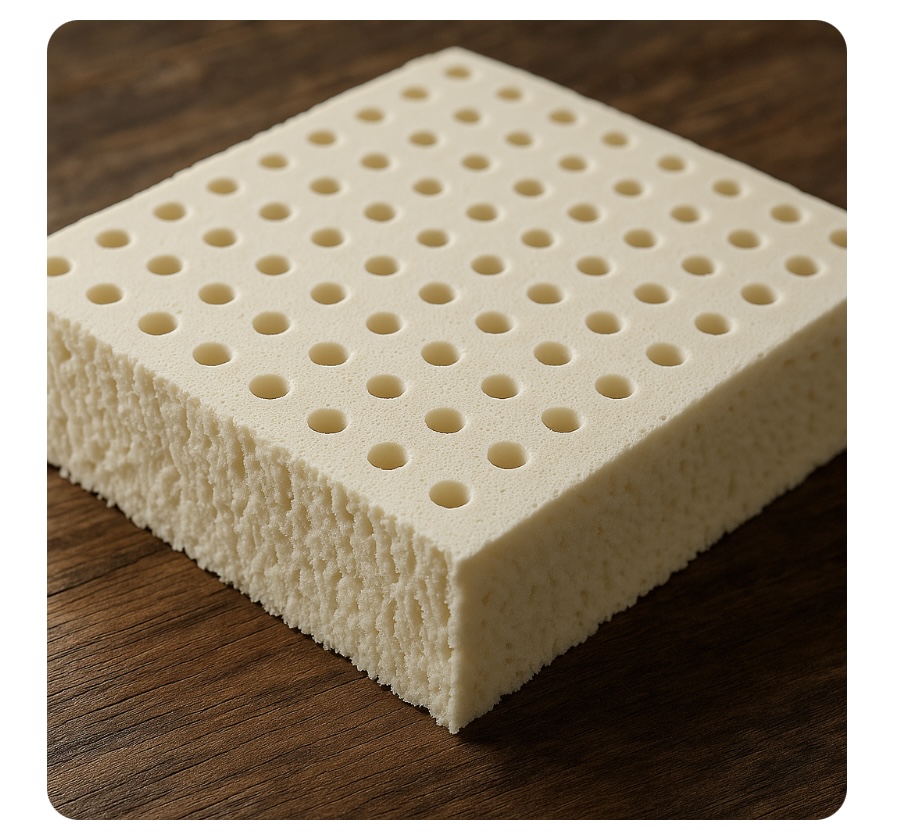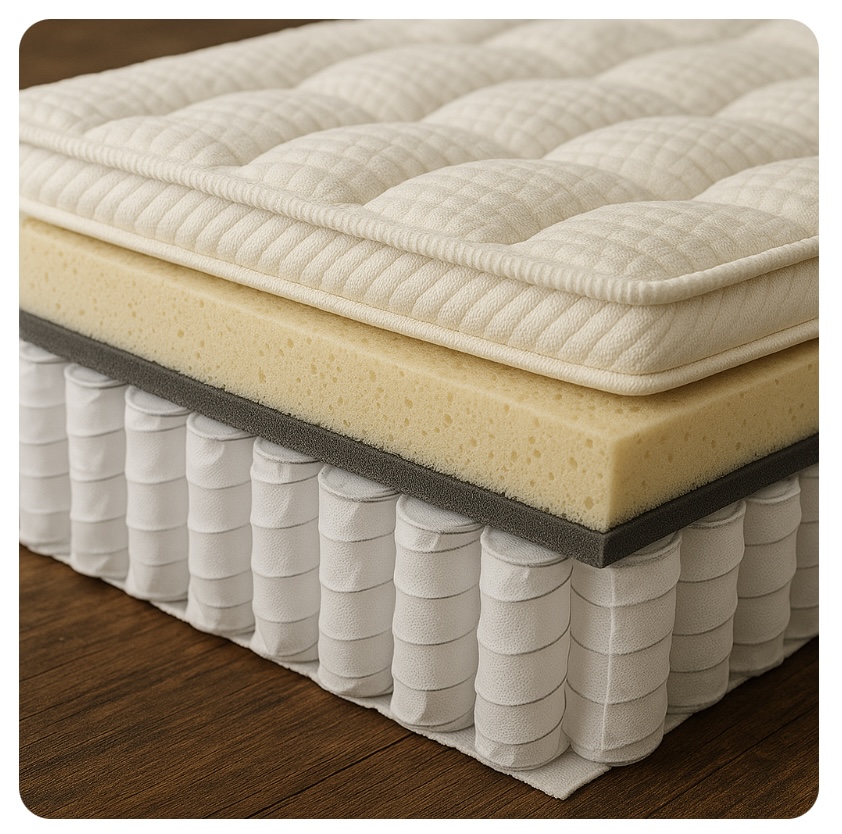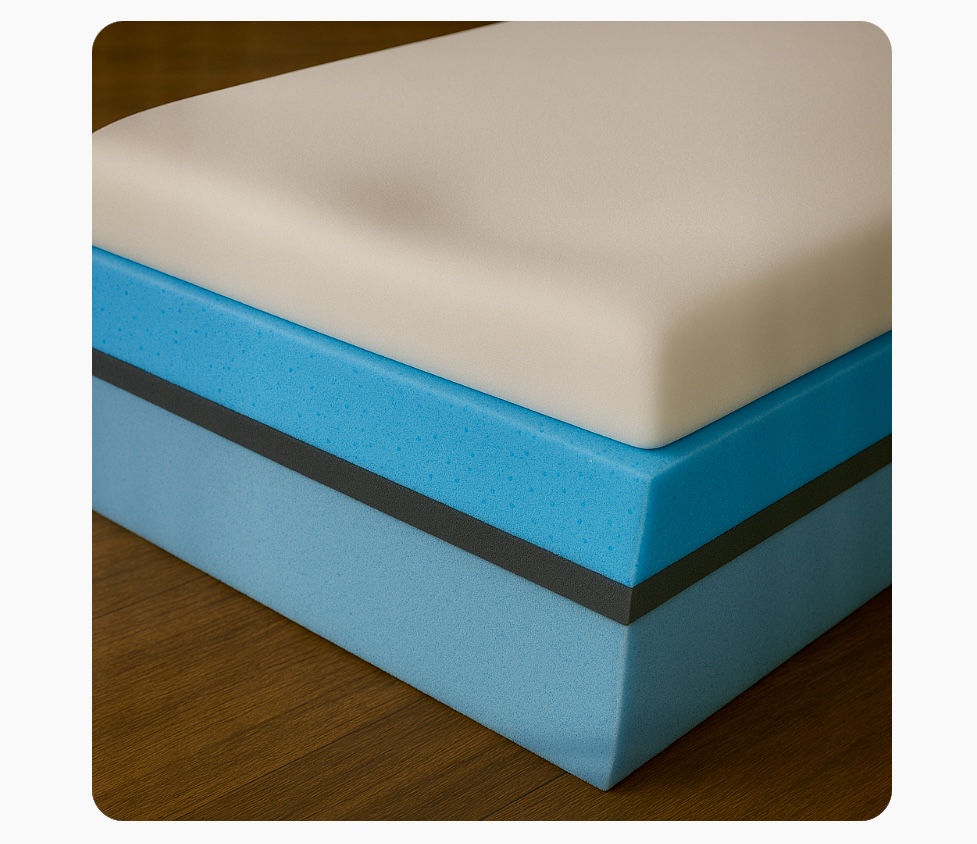
Blog Questions about beds and mattresses answered. And some stories told.

When you’re in the market for a new mattress, it’s easy to get caught up in comfort, firmness, and price. But there’s one question that savvy shoppers always ask: What type of mattress lasts the longest?
Investing in a durable mattress means more than just getting your money’s worth — it also supports better sleep quality, proper spinal alignment, and fewer aches and pains for years to come. In this post, we’ll explore the longest-lasting mattress types, break down what makes them durable, and help you choose the best option for your sleep needs.
1. Natural Latex Mattresses – The Gold Standard for Durability
Average lifespan: 13 to 17+ years
If you’re looking for the most durable mattress available, look no further than a 100% natural latex mattress. These eco-friendly beds are made from the sap of rubber trees, making them not only sustainable but incredibly resilient.
Why Latex Lasts the Longest:
- Maintains shape and support for over a decade
- Resists sagging, dust mites, mold, and mildew
- Breathable and temperature-neutral
- Hypoallergenic and chemical-free
Natural latex is known for its bounce, responsiveness, and ability to contour without “sinking” like some foams do. It’s also one of the best mattress materials for people with allergies or those seeking a green mattress option.

2. Hybrid Mattresses – Balanced Comfort with Moderate Durability
Average lifespan: 7 to 11 years
Hybrid mattresses combine the bounce of coils with the contouring comfort of foam (two sided are the best). They’re a great choice for combination sleepers or couples with different sleep preferences.
What Affects Hybrid Mattress Longevity:
- Quality of the innerspring coil system
- Type and density of top comfort layers
- Reinforced edge support and zoned coil design
Although hybrids don’t last as long as pure latex mattresses, they’re a solid middle ground for those who want both support and softness. Just be sure to invest in a quality brand — cheap hybrids can sag within just a few years.

3. Memory Foam Mattresses – Long-Lasting with Proper Care
Average lifespan: 5 to 9 yesrs
Memory foam mattresses are a popular choice thanks to their excellent pressure relief, motion isolation, and contouring support. But not all memory foam is created equal.
How to Make Memory Foam Last:
- Choose high-density foam (4–5 lbs/ft³) for better durability
- Use a breathable mattress protector to reduce moisture buildup
- Rotate your mattress every 3–6 months to prevent uneven wear
Lower-density foams may feel plush at first but often degrade more quickly, even the most expensive memory foam models may not look like they've dipped after a few years of use will not support you as well.

How to Extend the Life of Any Mattress
Regardless of mattress type, you can improve its longevity by following a few smart care tips:
- Use a mattress protector to guard against spills, dust, and allergens.
- Rotate the mattress every 3–6 months (unless it’s zoned or single-sided).
- Ensure proper support with a sturdy bed frame or foundation.
- Avoid sitting on edges for extended periods to prevent sagging.
- Keep pets off the bed to reduce wear and allergens.
✅ Final Verdict: Choose Natural Latex for the Longest-Lasting Mattress
If your top priority is durability, there’s no question — natural latex mattresses are the longest-lasting mattress type. They offer superior support, resist common wear issues, and can last well over a decade with minimal maintenance.
Memory foam and hybrid mattresses are ok alternatives if you’re looking for specific features like motion isolation or bounce, but expect to replace them sooner than a high-quality latex bed.



 Copyright © 2025 |
Copyright © 2025 |